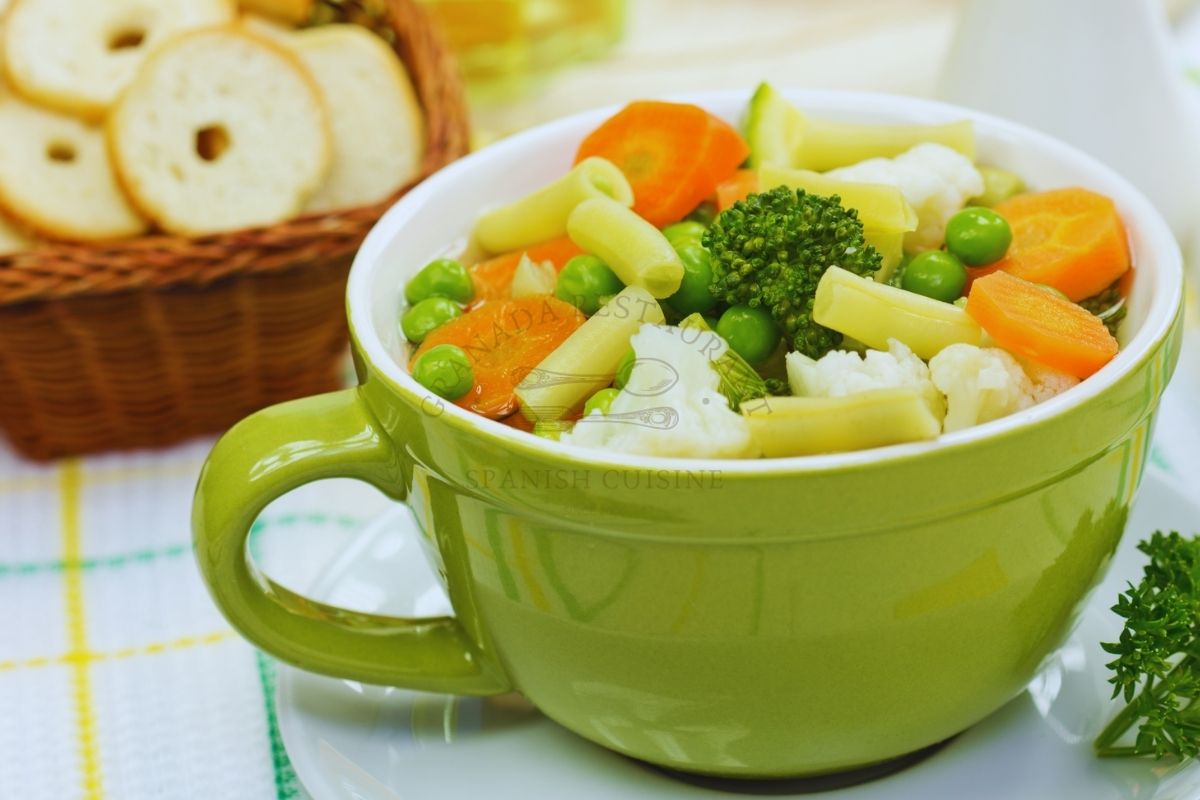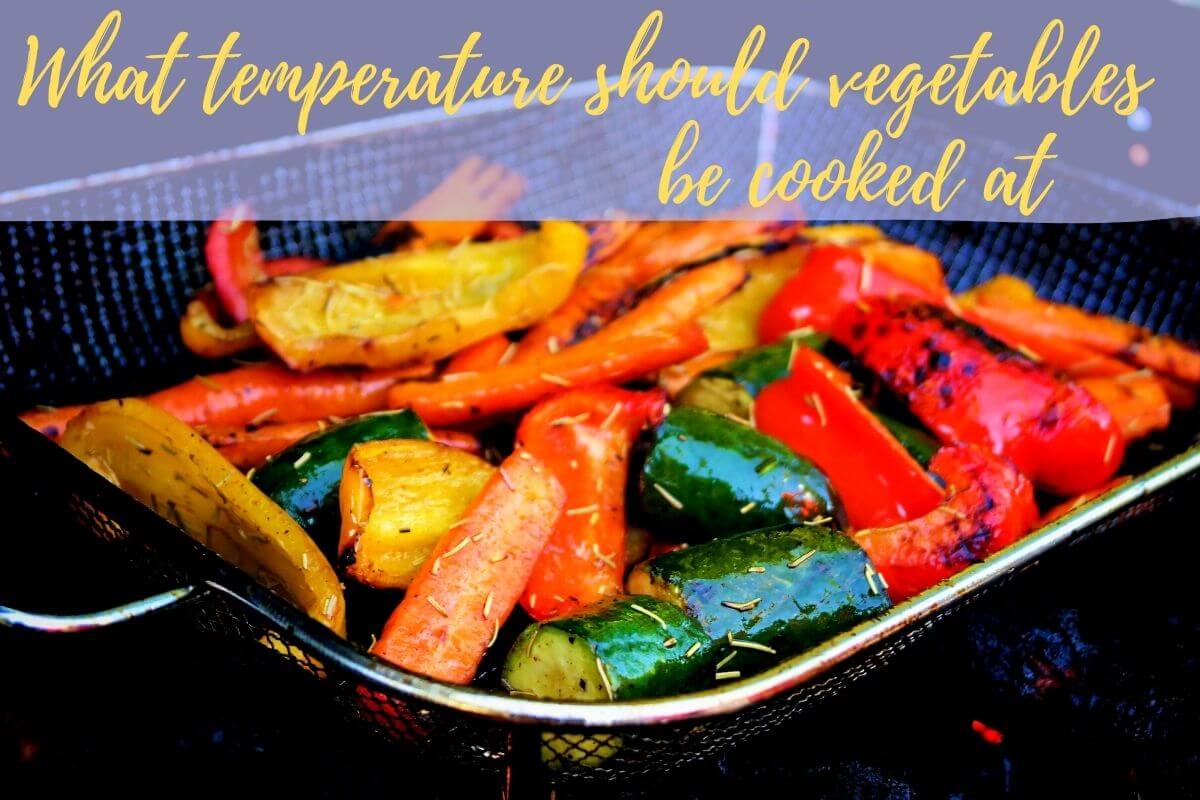What temperature should vegetables be cooked at? Cooking vegetables to the optimal temperature can make all the difference when it comes to their nutrition, texture, and even taste. But knowing what that perfect temperature is for each of your favorite veggies can seem like a complex task — not to mention choosing between different preparation methods!
We’re here today to break down the basics of roasted, boiled, or sautéed vegetables and explain the benefits of cooking at different temperatures. With this knowledge, you’ll easily create healthy, delicious dishes from your fresh produce.
What Is Cooking Temperature?
The cooking temperature for vegetables determines how quickly the outer layers of the products are heated, as well as what effect this has on the food’s texture and flavor. Depending on what type of vegetable you’re preparing and what method you use for cooking it, some dishes will benefit from a high-heat approach, while others might work better using a low and slow approach.
What’s more? You also need to consider what type of heat you’re using, whether direct or indirect. Direct heat will cook your vegetables quickly at a high temperature, while indirect heat is slower and more even.
What Temperature Should Vegetables Be Cooked At?
According to the data from the Virginia Department of Agriculture and Consumer Services, the recommended internal temperature for most vegetables is between 135°F (57°C) and 145°F (63°C). However, this temperature range may vary depending on the type of vegetable and the cooking method used.
For example, leafy greens and thin vegetables like asparagus may only require a quick blanching or sautéing at high heat. In contrast, denser vegetables like root vegetables and squashes may benefit from a longer cooking time at a lower temperature.
It’s important to follow specific recipe instructions and use a food thermometer to ensure that vegetables are cooked to the appropriate temperature for safe consumption.

How to Determine an Accurate Temperature
To accurately determine what temperature your vegetables should be cooked at, the most important factor is the type of vegetable. Different vegetables will require different cooking times and temperatures for optimal flavor and texture.
When possible, consult a recipe or use a food thermometer when cooking your vegetables to ensure they reach the recommended internal temperature. With the guidance of a professional chef, it’s also possible to experiment with different cooking techniques and temperatures for your vegetables to find what works best for you.
It can take some practice to get the hang of what temperature vegetables should be cooked at. Understanding these basics will help you create delicious dishes that bring out your produce’s maximum flavor and nutrition. With the proper knowledge and technique, you can enjoy nutritious, flavorful veggies with every meal.
Can I Cook with A Microwave and Determine the Right Temperature for Cooking Veggies?

Yes, you can cook vegetables in a microwave. A good rule of thumb when using the microwave is to use lower power levels and shorter cooking times for delicate vegetables like leafy greens. For best results, check with a food thermometer to ensure that your vegetables are cooked through before serving.
|Find out: The 30-Second Dilemma: Can You Safely Microwave Styrofoam?
Common Misconceptions People Make When Cooking Vegetables
There are several common misconceptions that people have when cooking vegetables, including:
Boiling vegetables is the best way to cook them
While boiling is a common way to cook vegetables, it can cause some nutrients to leach into the water. Roasting, sautéing, and grilling are great cooking methods that help vegetables retain their nutrients and flavor.
Cooking vegetables destroys their nutrients
While cooking can cause some nutrient loss, it can also enhance the bioavailability of some nutrients, making them easier for our bodies to absorb. Steaming, sautéing, and roasting are all great cooking methods that help vegetables retain their nutrients.
All vegetables cook in the same amount of time
Different vegetables have different cooking times; some can be overcooked or undercooked if not cooked for the right amount of time. It’s important to follow specific recipe instructions and use a timer to ensure that vegetables are perfectly cooked.
All vegetables should be cooked the same way
Different vegetables have different textures and flavors and can be best cooked using different methods. For example, leafy greens like spinach are best sautéed or wilted, while root vegetables like carrots and sweet potatoes are best roasted or braised.
Vegetables don’t need seasoning
While some vegetables are delicious on their own, most can benefit from a little seasoning to enhance their flavor. Salt, pepper, and other herbs and spices can add depth and complexity to vegetable dishes.
Overcooking vegetables is better than undercooking them
Overcooking vegetables can cause them to lose their flavor, texture, and nutrients. Undercooked vegetables can be tough and difficult to digest. Finding the right balance and cooking vegetables until they are tender but not mushy is important.
Frozen vegetables are less nutritious than fresh ones
Frozen vegetables can be just as nutritious as fresh ones, as they are often flash-frozen at the peak of their freshness, which helps to preserve their nutrients. They can also be more convenient and budget-friendly than fresh vegetables.
All parts of the vegetable are edible
While most parts of vegetables are edible, some, like the stems of broccoli or the seeds of bell peppers, may be tough or difficult to digest. It’s important to follow specific recipe instructions and discard any inedible vegetable parts.
Vegetables don’t need to be washed
Vegetables can harbor dirt, bacteria, and pesticides, which can be harmful if ingested. It’s important to wash vegetables thoroughly before cooking or consuming them.
Cooking vegetables is always time-consuming
While some vegetables may require a longer cooking time, others, like leafy greens or cherry tomatoes, can be quickly cooked in a matter of minutes. Choosing the right vegetables and cooking methods to fit your schedule and preferences is important.
Frequent Asked Questions
What is the ideal cooking temperature for vegetables?
The ideal cooking temperature for vegetables can vary depending on the type of vegetable and the cooking method. In general, most vegetables can be cooked at a temperature between 135°F (57°C) and 145°F (63°C), depending on the recipe and cooking technique.
Does the cooking temperature for vegetables vary depending on the type of vegetable?
Yes, the cooking temperature for vegetables can vary depending on the type of vegetable. Some vegetables, such as leafy greens, may require a short cooking time at high heat, while others, like root vegetables, may require a longer cooking time at a lower temperature.
Are there any general guidelines for the cooking temperatures of vegetables?
General guidelines for cooking vegetables include using high heat for quick-cooking vegetables, such as greens and asparagus, and lower heat for denser vegetables, such as potatoes and carrots. Vegetables should be cooked until they are tender but not mushy.
Read More: How to Cook Chicken Livers Like a Pro!
How can I tell if my vegetables are cooked properly?
To tell if your vegetables are cooked properly, you can use a fork to test for tenderness. Vegetables should be fork-tender, meaning they should be cooked through but not mushy.
What are some common mistakes people make when cooking vegetables?
One common mistake people make when cooking vegetables is overcooking them, which can result in mushy or flavorless vegetables. Another mistake is not seasoning vegetables properly, which can result in bland or unappetizing dishes.
What are some tips for cooking vegetables perfectly every time?
- Choose fresh, in-season vegetables for the best flavor and texture.
- Use the appropriate cooking method for the vegetable you are cooking.
- Cut vegetables into uniform sizes for even cooking.
- Season vegetables with salt, pepper, and other herbs and spices to enhance flavor.
- Don’t overcrowd the pan when cooking vegetables, as this can cause them to steam rather than sauté or roast.
- Use a timer to ensure that vegetables are not overcooked.
Check out this video on how to cook vegetables properly
Cooking vegetables at the right temperature ensures you get the most out of their nutrition while enjoying a delicious dish. Whether steamed, roasted, boiled, or sautéed — each method has its own benefits and optimal temperatures to ensure perfect results. With what you know, you can confidently toast, boil, or sauté your favorite veggies to perfection!
Reference:
- https://www.vdacs.virginia.gov/pdf/dandf-cooking-temps.pdf
- https://www.foodsafety.gov/food-safety-charts/safe-minimum-internal-temperatures

I am Benjamin Nunez, and I love Spanish food, Italian food, and seafood. I have worked in kitchens all my life. I started as a dishwasher when I was just a teenager, and worked my way up to being a head chef.
I specialize in Spanish cuisine, but I can make any kind of Italian or seafood dish you want. My kitchen is always open! Website: https://granadarestaurant.com/

